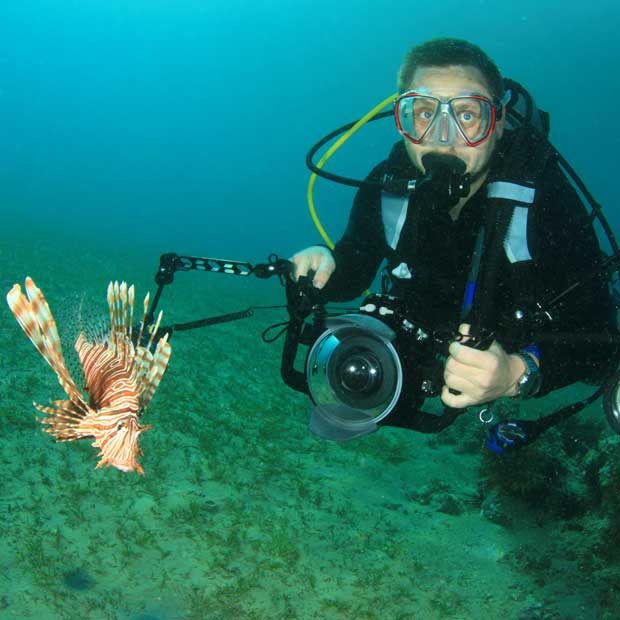Tips for making Underwater Photography

Getting Started in Underwater Photography
Snorkeling is a very cost effective and convenient way to see a
lot of what is under the water. A snorkel set is the minimum gear requirement
and you can do-it-yourself on your own schedule and quite often without a boat.
The photographer considering this type of photography should first acquire
snorkeling skills before adding the complication of photography. An
underwater-capable camera or underwater camera housing for a non-waterproof
camera is of course another requirement for the photography aspect. For best
quality imagery, you will want to have a DSLR model in your hands.
Underwater photography produces some of the most eye-catching
and unusual images around, but they are a challenge to shoot and require some
fairly expensive equipment. Practicing the technique beforehand, especially if
you have a once in a lifetime trip is the key, as is being comfortable in the
water. Here are some ideas on how to get those underwater photos.
Get Practiced in a Pool
Before attempting underwater photography in the ocean, where the
water is unpredictable, try taking images in a pool. You will need a specialty
underwater housing. Most of the popular point-and-shoot and DSLR cameras have
available plastic cases which seal in the camera and the lens. These are
watertight, and are essential to protect your equipment. Keep a polarizer
filter attached as this reduces flare and unwanted reflections from the water.

Before entering the water
Before going into any water, get information about the kind of
life to expect to know whether or not it is dangerous to you. If known dangers
lurk, don’t approach.
Water Clarity is Important for Image Quality
Water clarity is very important for clear underwater
photographs. And some of your subjects may be working against you in this
matter.
This ray was very cooperative (perhaps just very distracted),
but it was destroying water clarity as it fed along the bottom.
The less water there is between the camera and its subject, the
less effect water clarity has on image quality. For this this reason, getting
close to the subject is important; and for this reason, very wide angle lenses
are typically the best choice for underwater photography.
GETTING UNDERWATER
By and large, serious underwater photography is a pursuit that
requires scuba diving. There are some specific subjects--notably dolphins and
whales--where you are better off snorkeling. This is mostly because marine
mammals tend to be bothered by noisy bubbles from scuba gear, so you leave it
on the boat. Even this requires more than just snorkeling to be really
successful. Known interchangeably as free-diving, skin-diving, or breath-hold
diving, you dive as deep and long on one breath as your body can handle.
Physical fitness is a big part of it. In theory, you could get some good shots
of shallow reefs this way, but you're limiting your subject matter
significantly.

Ever notice how amateur under water shooters’ images are mostly
just blue? Water absorbs light — beyond about 3 feet from you, your lights will
be of little use in bringing out the glorious colors of the under water world.
Photographers must contend with something called “backscatter,” the sometimes
infinite particulates in the water column that can individually reflect your
flash back at the camera. Less water between your lens and subject will make
for sharper, clearer images.
Underwater photographers can spend an entire dive on one small
coral head. Waiting for animal behavior takes time, and letting other divers
get out of your frame is always worth the extra few minutes, unless the divers
are your subject.
Eyes are a great connection point between subject and viewer
that can give your images stronger emotional content. With wildlife
photography, when some motion blur can be intentional or unavoidable, it’s
especially important to keep the eyes sharp.
To ensure your settings and framing are correct, make time to
stop and review images as you go. Pause to look at your capture while you’re
still in the moment, so you can make adjustments and try again while the whale
shark is still in your vicinity.
Your underwater attitude

An important thing to remember is never to think of your
photographic objects as catches or food! It will be transmitted by means still
not understood, but it will surely keep water life at a distance. Send thoughts
of admiration and warmth, and you won’t believe how well it will be recognised.
And never, absolutely never hurt any living being underwater!
Believe it or not, such an attitude will reward you with
astounding views, unbelievable contacts – and rewarding photos. Be
forewarned, once you enter the underwater space, expect to be hooked for life!


















0 comments:
Post a Comment